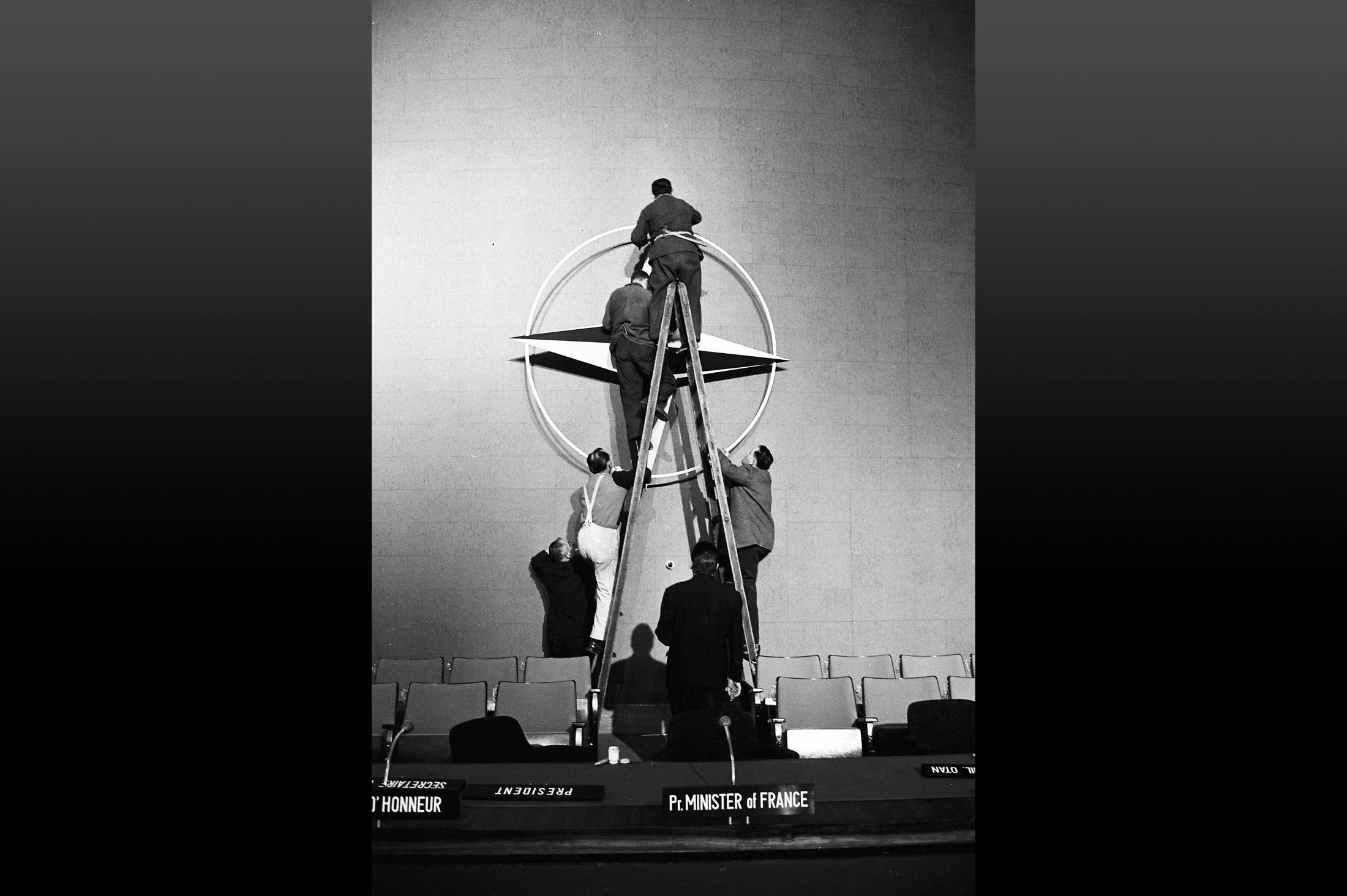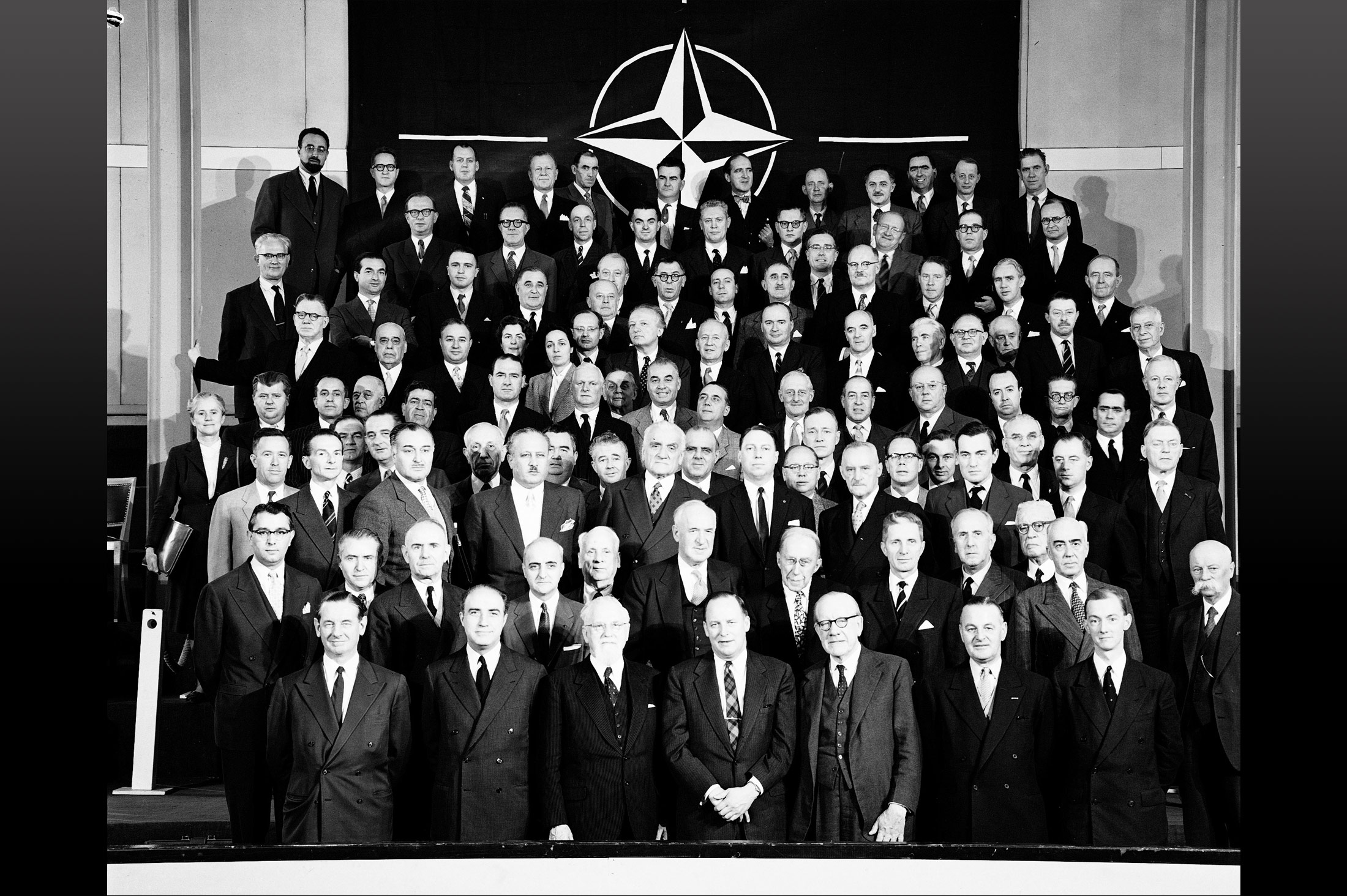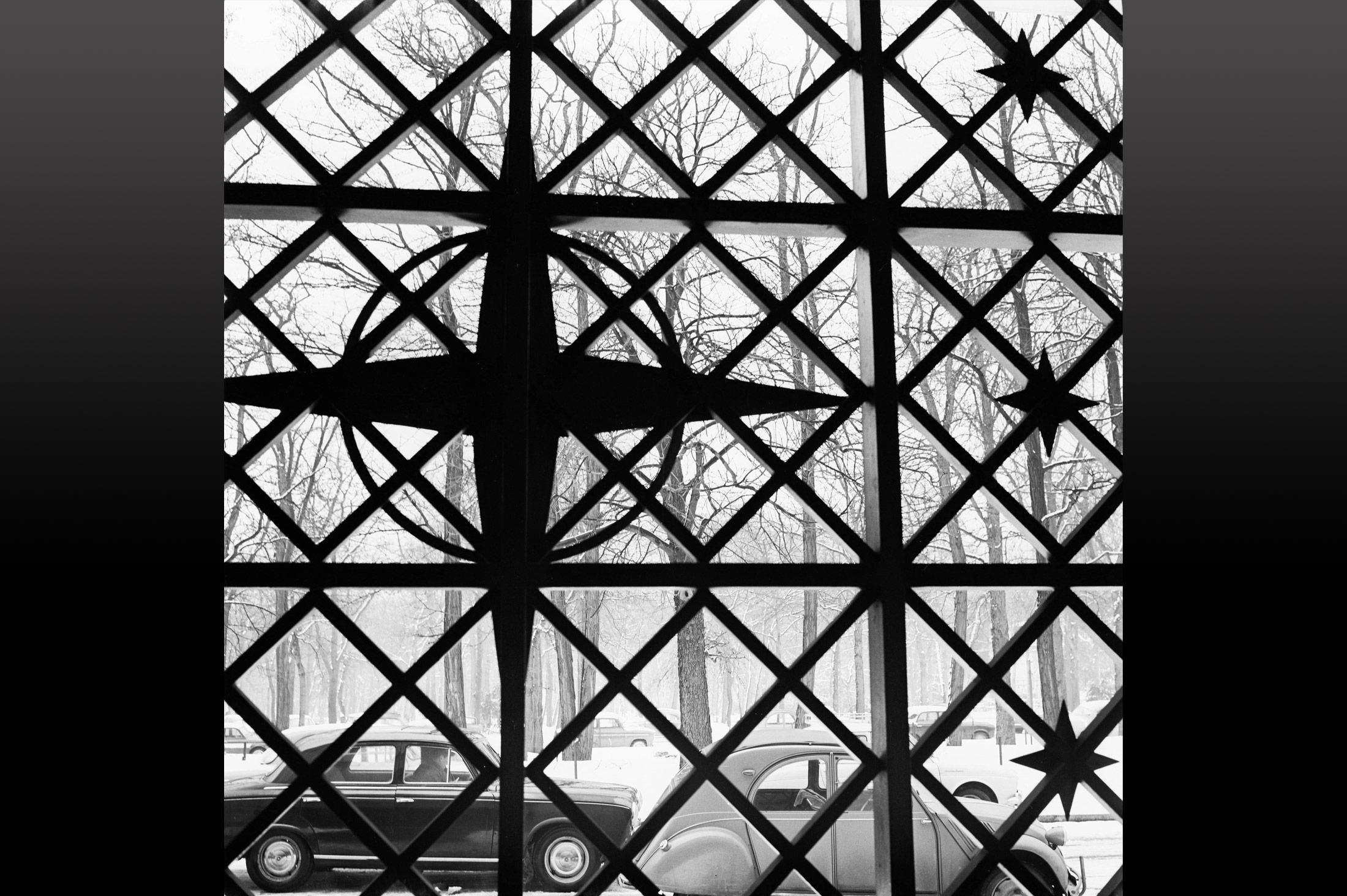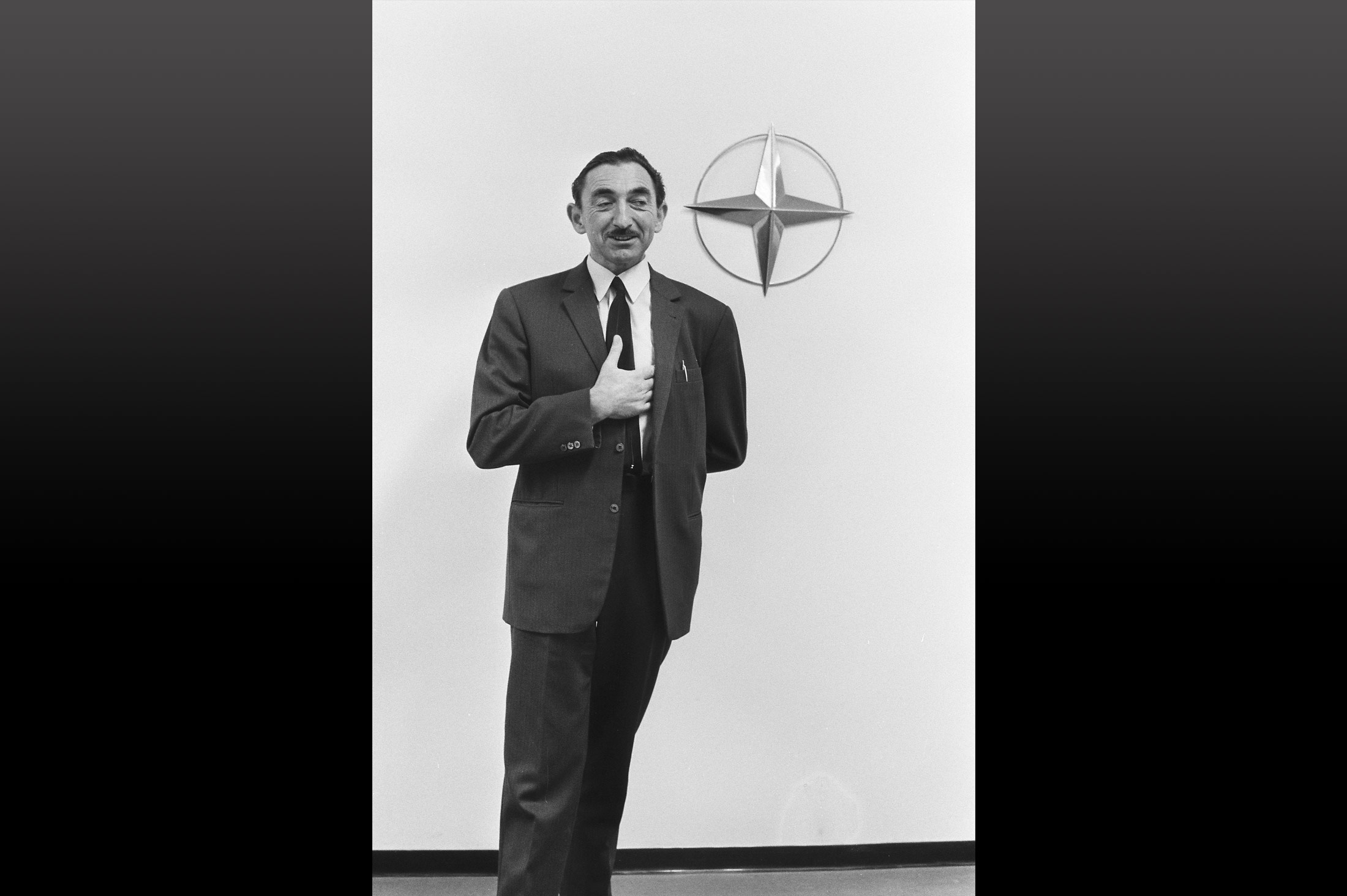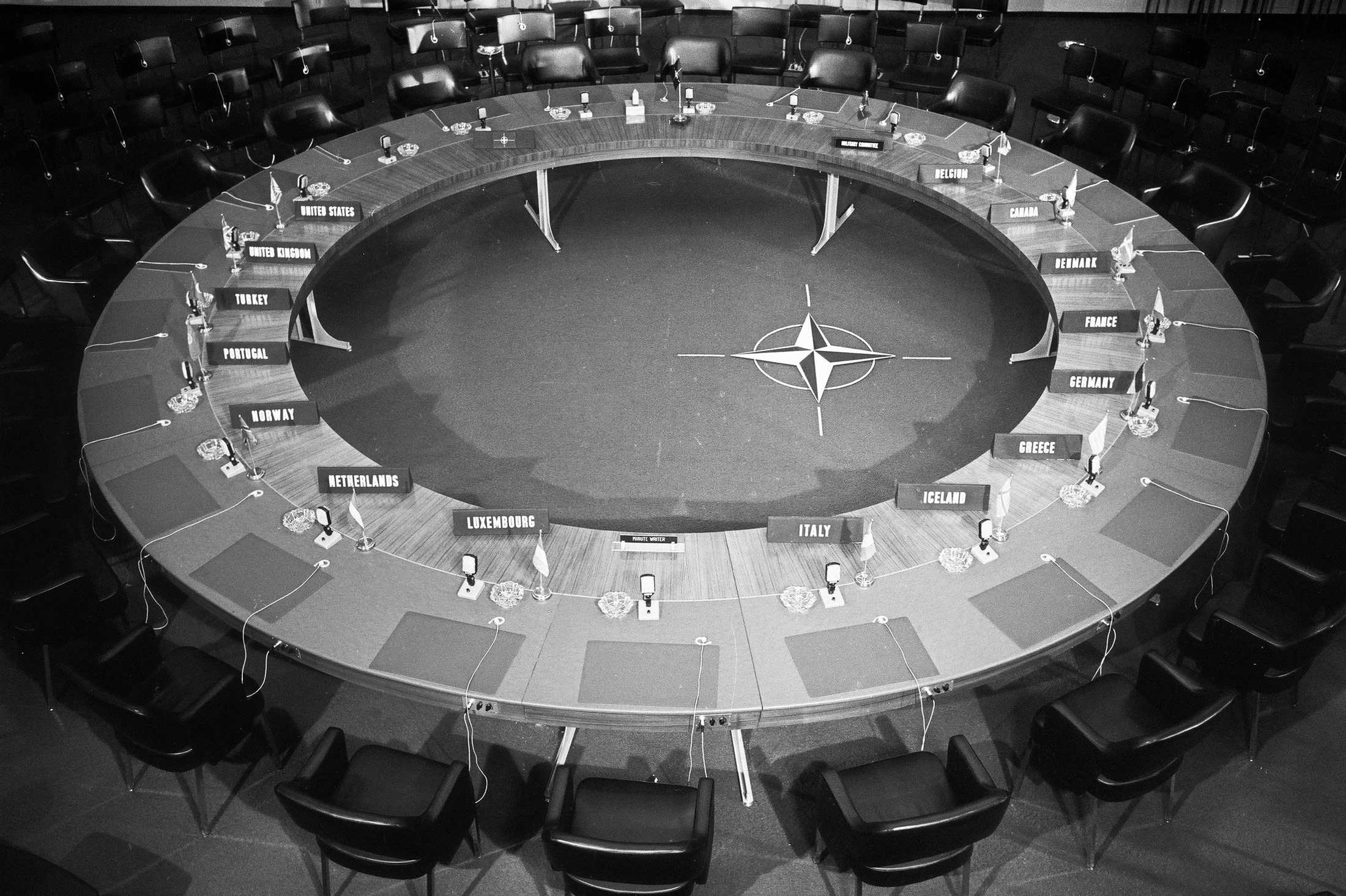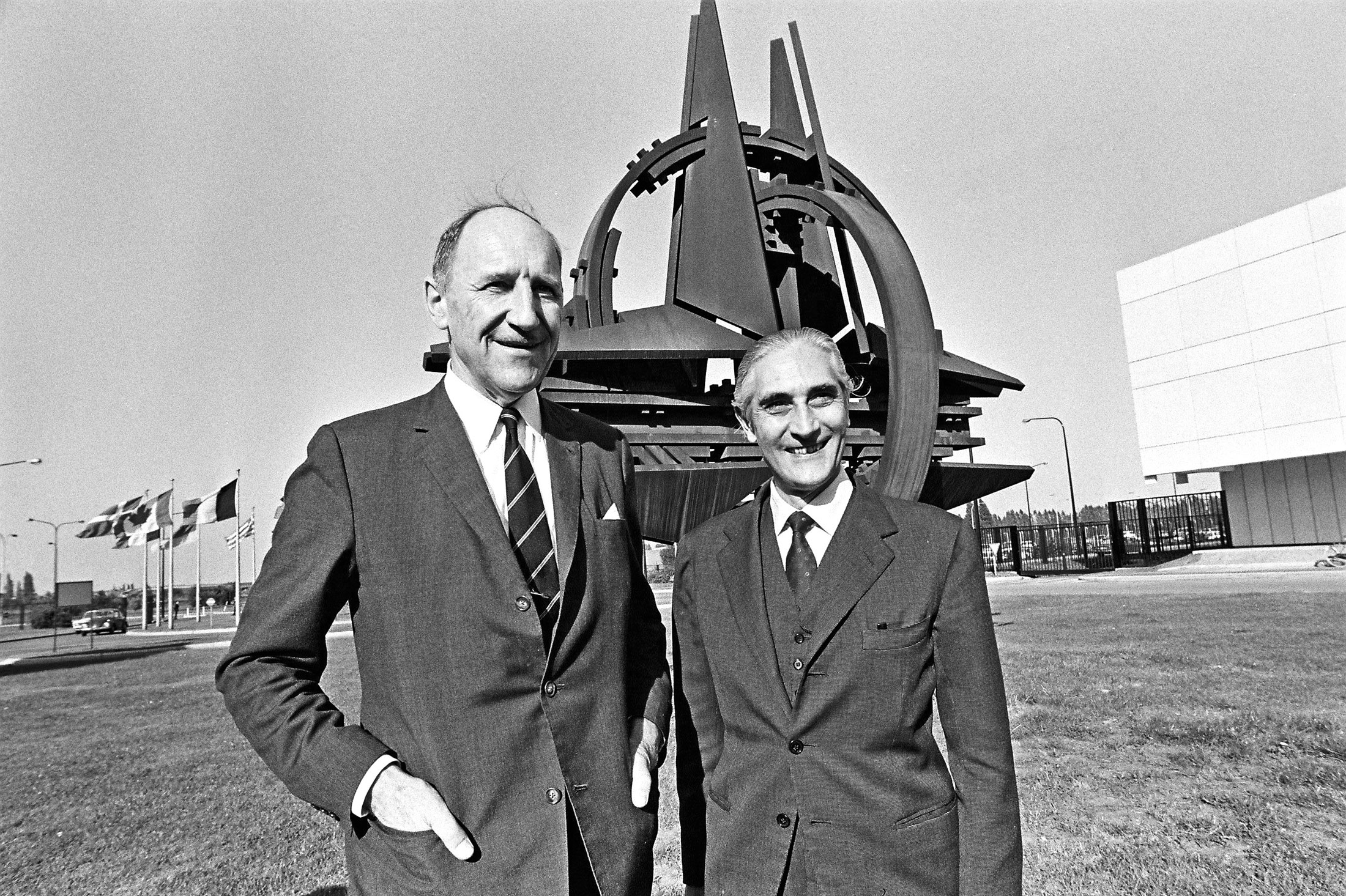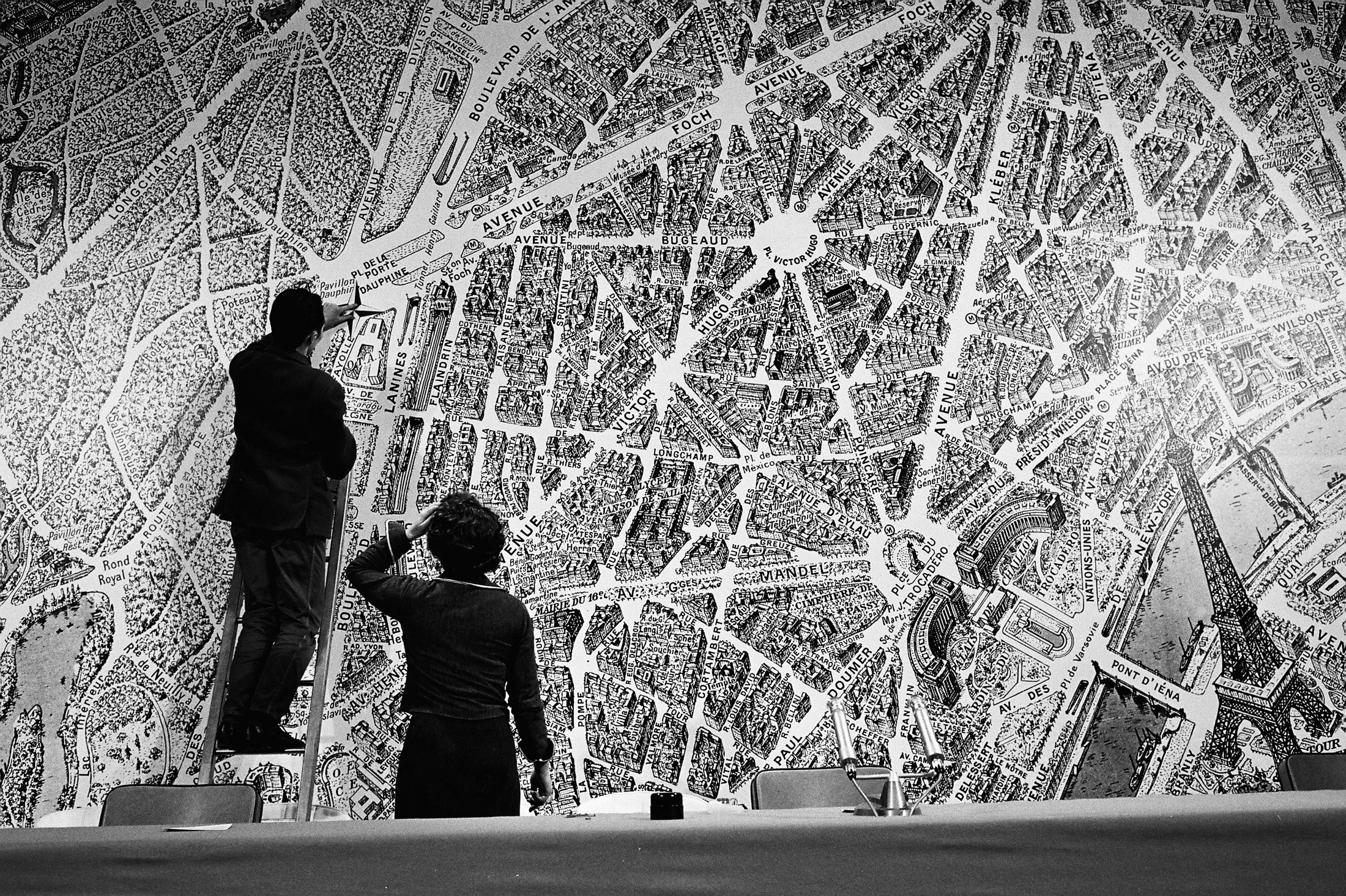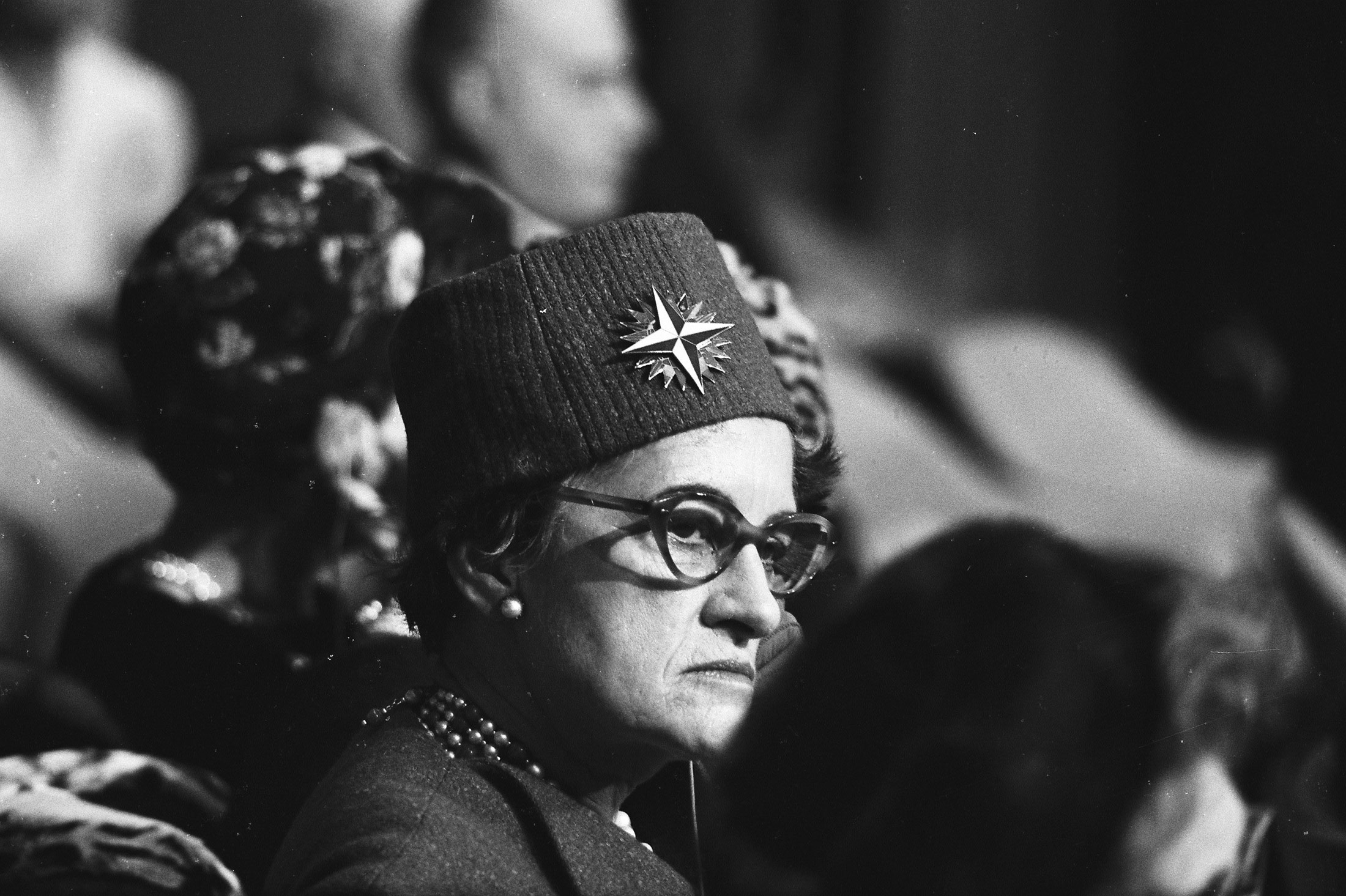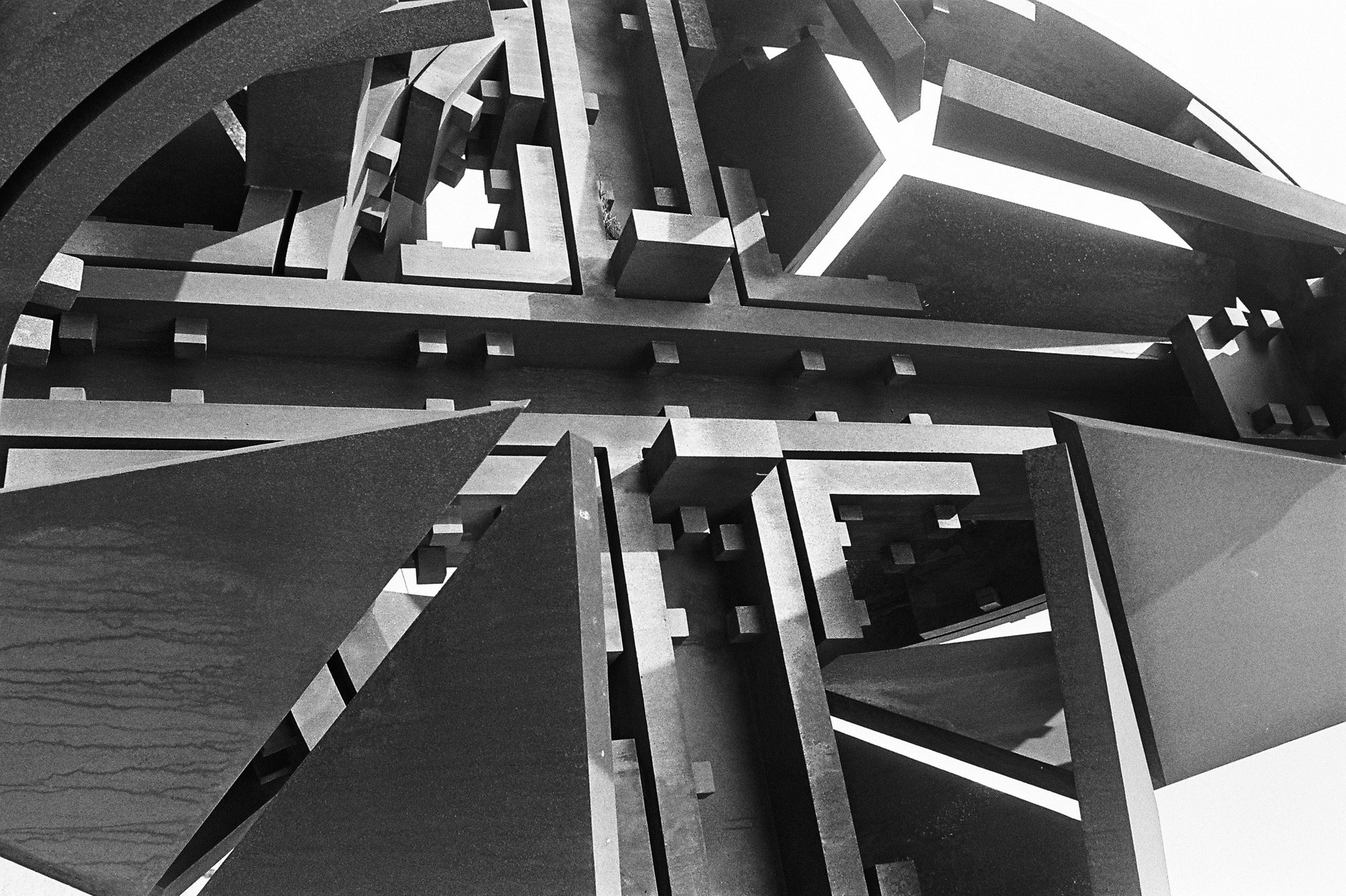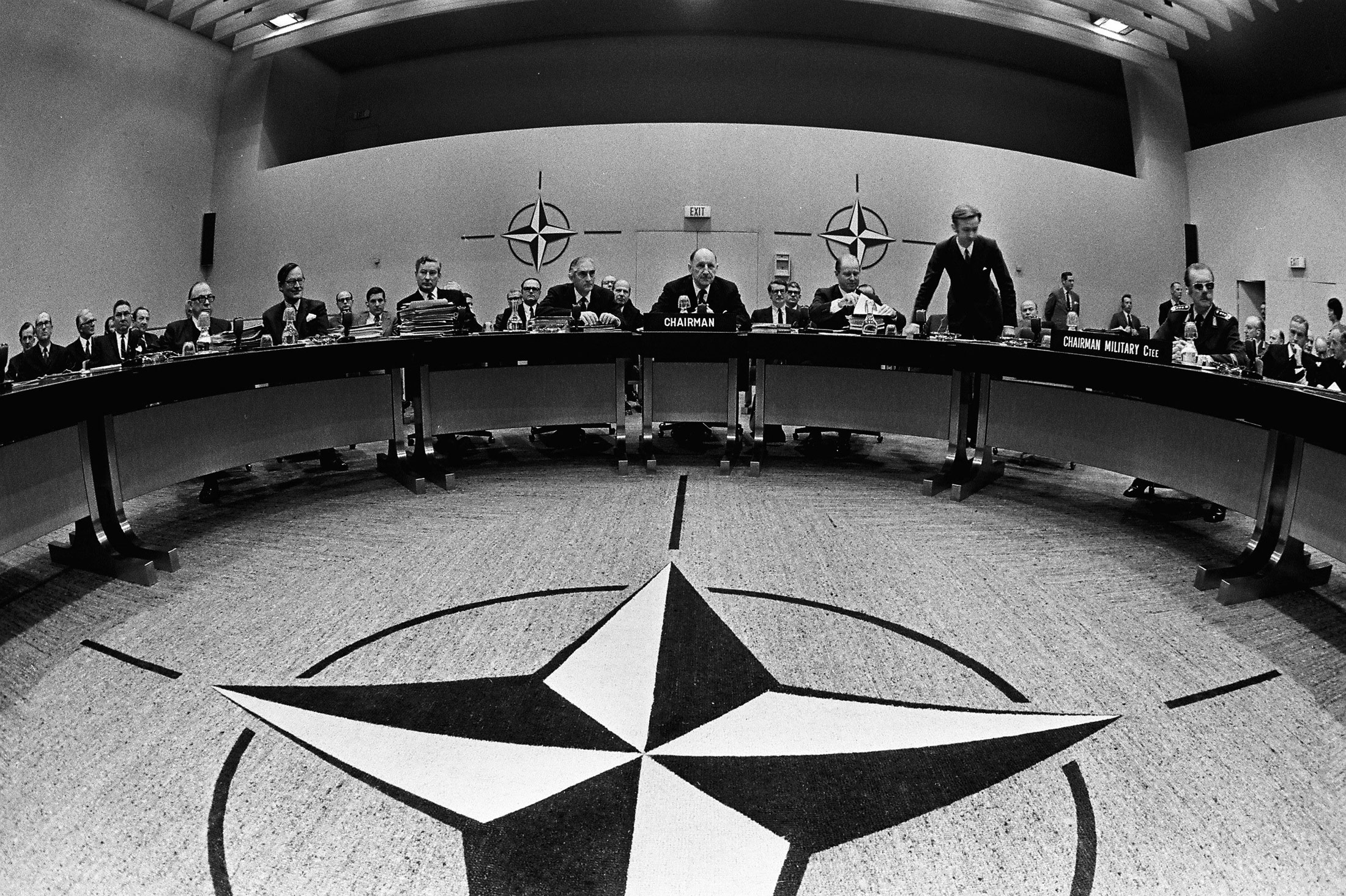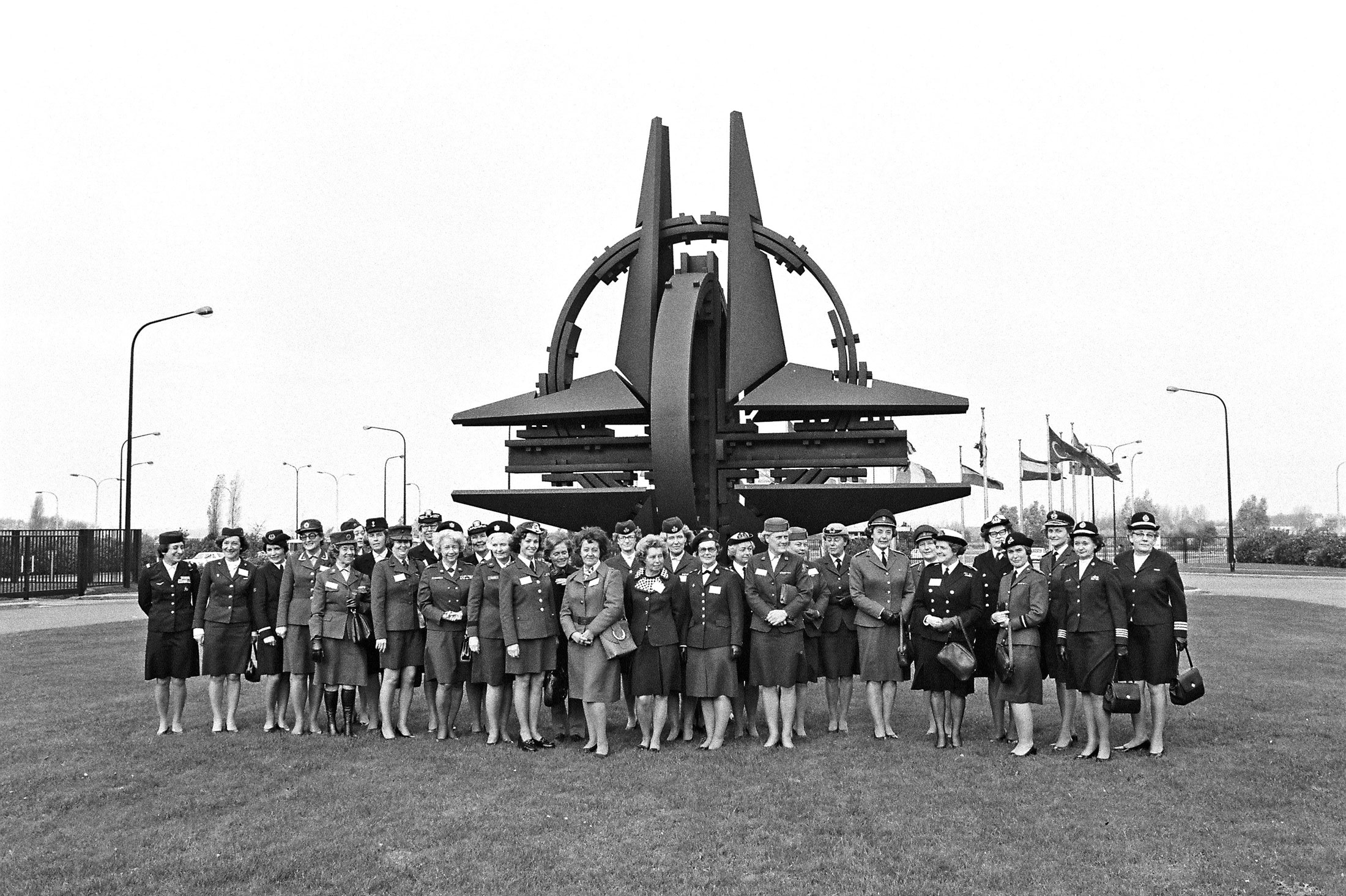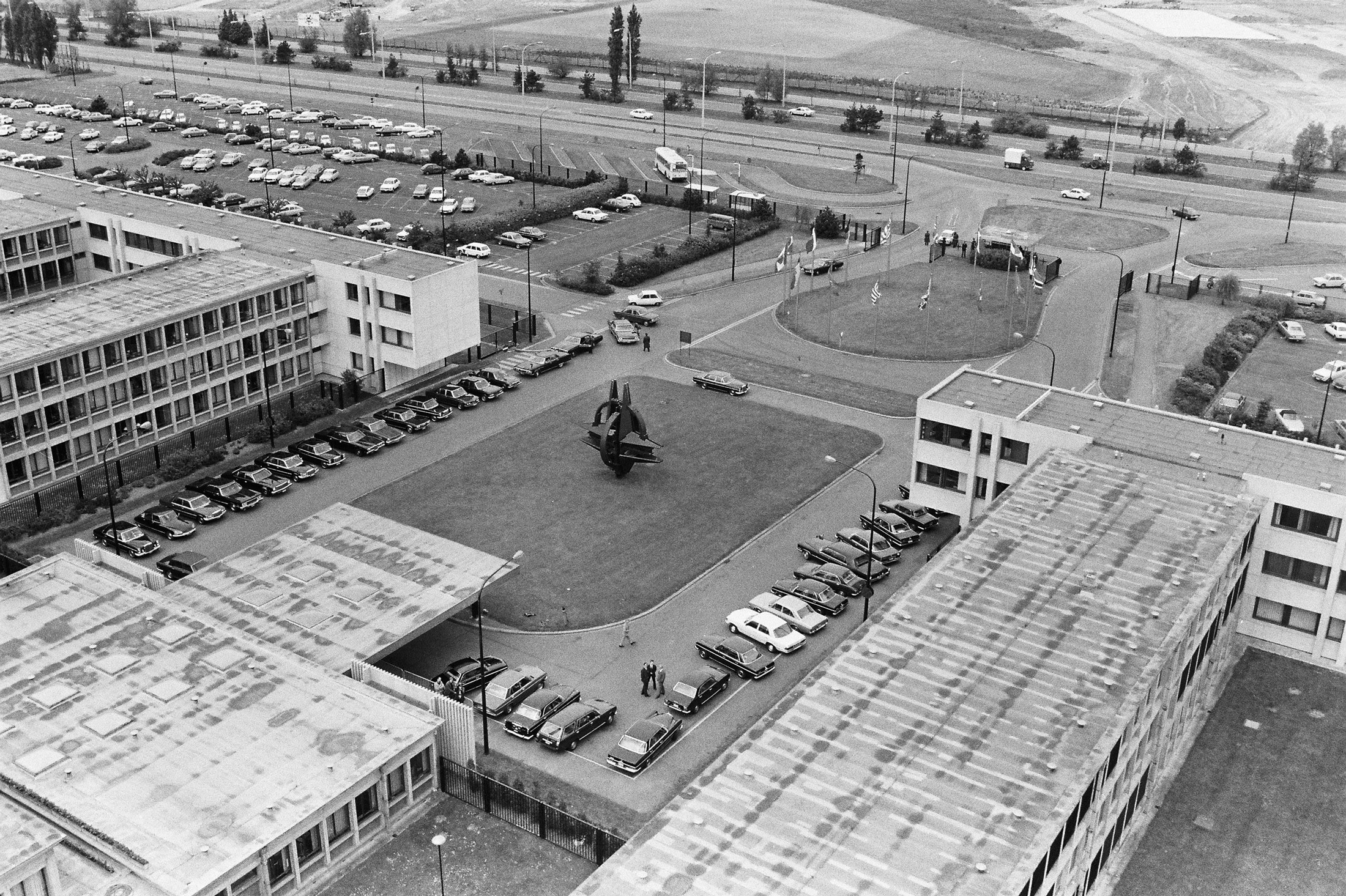A star is born
Choice of designs
The birth of the NATO symbol and its incorporation into a flag involved many design proposals. The goal was to have an emblem that symbolised the principles of the Atlantic community.
The Canadian Secretary of State for External Affairs, Lester B. Pearson, intended to submit a draft design of an emblem to a North Atlantic Council meeting in Lisbon in 1952. However, at the last minute, he decided to leave the matter up to the Council. In August 1952, the matter was referred to the newly created NATO Information Policy Working Group. After much consideration, the Working Group “agreed to recommend to the Council that there should be a NATO Flag,” and an emblem within it (AC/24-R/7).
The logo had to be acceptable to all the NATO members and reflect the values of the Alliance. Many designs were submitted. Among them was a silver shield with two blue stripes and 14 stars. The shield symbolised defence and protection and the stripes represented the Atlantic, while the 14 stars signified the then-14 members of NATO. But this design would require alteration of the emblem each time new members joined the Alliance.
Ultimately, none of the proposed designs were retained, and the North Atlantic Council provided guidance for selecting a NATO logo to use on a flag: it needed to be simple and striking in design; it had to illustrate the community of traditions and ideals which united the members of the North Atlantic community; and it had to "bring home the peaceful purpose of the North Atlantic Treaty" (AC/24-D/5).


